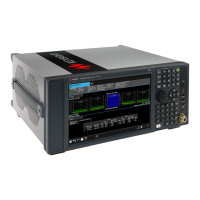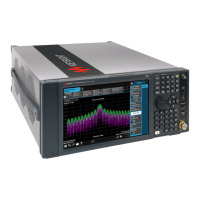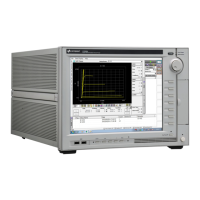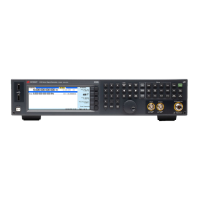Keysight M937xA PXIe Service Guide 2-47
Tests, Adjustments, and Troubleshooting
Adjustments
Receiver Adjustment
The receiver calibration is used to adjust your network analyzer for a flat
response across its full frequency range:
1. A USB power sensor is connected to analyzer Port 1 to establish a reference
for flatness.
2. A cable is inserted between the power sensor and the test port to establish
a reference for the cable.
3. The same cable is connected between analyzer Port 1 and Port 2, and a
signal from Port 1 is used to adjust the “B” receiver at Port 2.
4. The adjustment is repeated using a signal from Port 2 to adjust the “A”
receiver at Port1.
Data obtained during this adjustment are stored in the analyzer and used in
subsequent measurements. Data can be recreated by performing another
receiver calibration adjustment.
Equipment Used for the Receiver Adjustment
Procedure
1. Connect the USB power sensor and adapter to the analyzer Port 1. If using
a power meter, make the proper GPIB connections. Refer to “Get the
Hardware Required for your GPIB Instruments” on page 2-5.
2. Press Utility > System > Service > Adjustments.
3. In the Select Desired Adjustment dialog box, click Receiver Ad justment.
4. Follow the instructions and prompts as they are displayed. If using a power
meter, ensure the GPIB settings for the sensor(s) are correct in the dialog
box.
Equipment Type Model or Part Number Alternate Model or Part Number
USB Thermocouple power sensor
U8485A Option 200
a
N8485A power meter
b
Adapter, 3.5 mm -m- to 3.5 mm
-m-
83059A 85052-60014
RF cable, 3.5 mm (-m- to -m-) 11500E Any equivalent
a.
If not available, use any power meter with one or two sensors that cover the frequency range of the DUT.
b. Refer to “Get the Hardware Required for your GPIB Instruments” on page 2-5.

